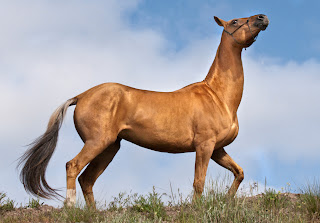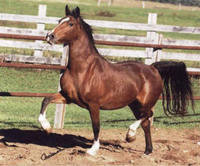Head-shaking is an unfortunately common condition in slightly older horses that can be difficult to diagnose and incredibly frustrating and heart-breaking to endure.
However, recent studies into the condition, which causes horses to repeatedly shake, twitch and their heads in uncharacteristically erratic fashion is not, as was once thought, simply a vice or a neurotic bad habit, but a response to an irritation. The difficult thing, however, is establishing an exact cause.
Symptoms
Some of the signs to look out for if you are concerned about head-shaking in your horse include one or more of the following:
- Shaking the head from side to side
- Shaking the head up and down - "flipping nose"
- Behaving as if there is a bee buzzing up the horse's nose
- Snorting or sneezing
- Rubs his nose on objects such as his legs or the ground
- Appearing anxious in association with head shaking.
Most of these signs tend to appear in mature horses with the average age of onset estimated at around 9 years. However, unfortunately, it has also been known to occur in good, reliable horses with no other problems.
There are a number of often unidentifiable causes, so different treatments work for different cases, while some horses do not respond to any treatment at all. Some potential causes of Head-shaking include:
Allergies
Some researchers believe that an allergy, similar to hayfever in humans might be the cause,however, drugs to control allergic conditions do not always stop horses from head shaking.
Other vets have suggested that a previous viral infection, particularly equine herpes virus, may be involved, or some other agent which causes a typeof nerve damage.
Light plays a role as a stimulus for head shaking in some cases - as can exercise or noise.
This suggests that stimulation to one of the main nerves within the head with bright sunlight, for example, can cause pain elsewhere in the head - rather like a kind of neuralgia.
If light plays a role, then keeping the horse out of bright sun can help.
With many head shakers, it may be impossible to find the cause.
Trying treatments
Many conditions can cause head shaking, including middle ear disorders, ear mites, sinus and gutteral pouch problems, eye abnormalities and dental disease.
If a cause is identified, the appropriate treatment can then be selected. If no specific cause is found, various empirical treatments are available.
A mesh or veil over the nose is a one of the most common treatments. It works by decreasing irritation from small airborne foreign bodies, such as dust, pollen and midges.
A change of environment improves other head shakers. Various pills or surgery to cut the nerves involved have been tried, some of which help one case and some another. If a drug has a beneficial effect, it should be noticeable within days.
Seasonal condition
In many cases, headshaking is seasonal. The most common time for it to occur is spring and early summer.
This means that a significant number of horses, who are bought apparently normal in the winter, can become unrideable in the summer.
Unfortunately, head shaking can often be a repeating pattern over many years. It is certainly a condition which presents a diagnostic challenge to the veterinary profession and is a cause of concern to horse owners.



















.jpg)